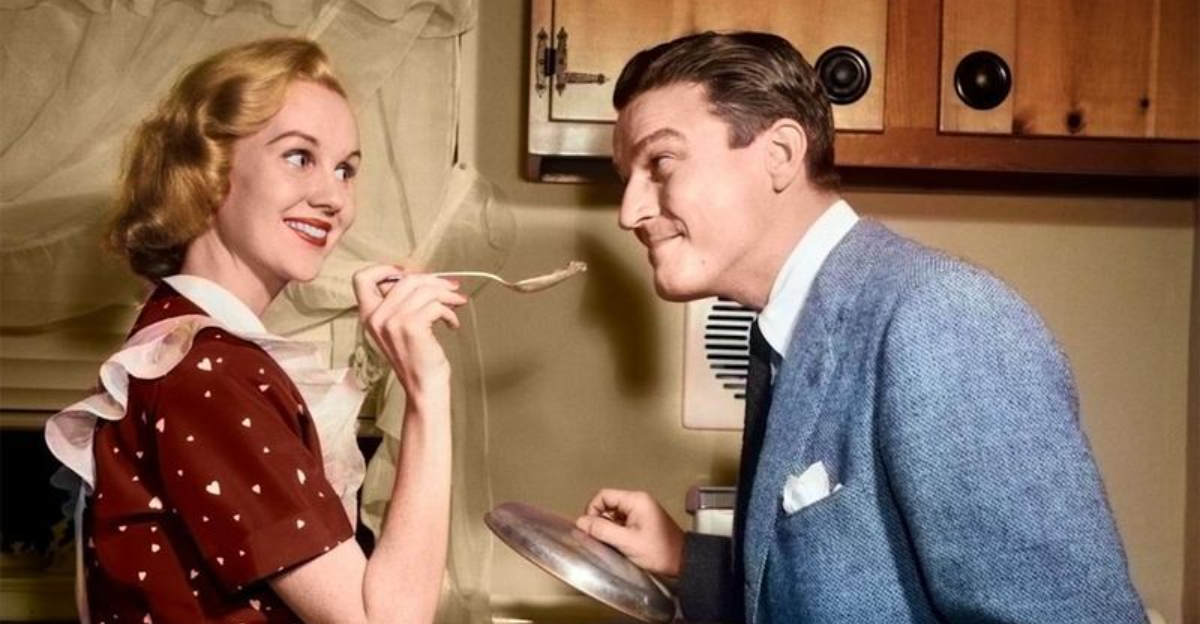29 Relationship And Family Beliefs From The 80s That Didn’t Really Age Well
Picture this: You’re flipping through channels and stumble upon an old 80s sitcom. The hair is big, the colors are neon, and there’s a laugh track echoing every outdated punchline.
Suddenly, you hear a character boast about being a “real man” who never changes diapers. You groan, maybe laugh a bit, and think, “Wow, did we really buy into that?”
It’s wild to think about the beliefs that shaped our parents’ and grandparents’ relationships and family dynamics, many of which feel like they’ve been plucked straight out of a time capsule.
From gender roles that were as rigid as a pair of shoulder pads to family values that didn’t quite hit the mark, here’s a cheeky look back at 29 beliefs from the 80s that haven’t aged well at all.
1. Men are supposed to be the sole providers

Ah, the 80s, when men were deemed the captains of economic ships, and women were left as passengers. The belief that men should solely provide for their families was so deeply entrenched it could make a concrete wall blush. This idea wasn’t just about financial pressure; it was a badge of masculinity.
Men were expected to work long hours, climb corporate ladders, and bring home the bacon, while women were supposed to cook it. This notion painted a picture of men as unstoppable work machines, often sidelining personal aspirations or emotional well-being. Fast forward to today, and we see a shift.
Couples now share financial responsibilities more equitably, acknowledging that two incomes are often necessary and that women are just as capable of being breadwinners. This outdated belief crumbled under the weight of progress and the realization that partnership, not hierarchy, builds a stronger family foundation.
2. A woman’s life goal is to get married

Back in the 80s, a woman’s life was often measured by her journey to the altar. The cultural narrative was a relentless drumbeat: find a husband, settle down, and live happily ever after. Marriage was seen as the pinnacle of a woman’s achievements, overshadowing career aspirations or personal growth.
Society whispered (or sometimes shouted) that without a ring, you were incomplete. Thankfully, we’ve moved beyond such simplistic blueprints for happiness. Today, women are encouraged to carve their own paths, whether that includes marriage, career, travel, or a mix of everything.
Life goals have diversified, and the pressure to conform to one single destiny has eased. Women are now celebrated for their achievements beyond the confines of marriage, proving that fulfillment comes in many forms.
3. Divorced women must have “failed”

Once upon a time, divorce was seen as the scarlet letter of relationship failures. A divorced woman was often viewed with pity, suspicion, or outright judgment. The stigma was so thick you could cut it with a knife.
She was whispered about at the grocery store and subjected to a barrage of unsolicited advice about where she went wrong. But as time marched on, so did the understanding of marriage’s complexities.
Divorce is no longer synonymous with failure but rather a step toward self-discovery, healing, and new beginnings. Society has come to recognize that staying in an unhappy marriage isn’t a badge of honor and that personal happiness and growth are valid, even if it means parting ways.
4. Being a stay-at-home mom means you have no ambition

In the 80s, the role of a stay-at-home mom was often overshadowed by the corporate hustle. The narrative painted these women as lacking ambition, stuck in a domestic bubble while the world moved on.
The truth is, managing a household, raising kids, and being the familial glue takes a unique kind of ambition and skill set. Contrary to the stereotypes, stay-at-home moms were, and are, dynamic, resourceful, and incredibly ambitious in their own right.
As society evolved, so did the recognition of the invaluable contributions of stay-at-home parents. Their ambition isn’t confined to boardrooms but is visible in nurturing future generations, managing complex schedules, and supporting families’ emotional health.
5. Working moms are neglecting their families

The 80s carried a particular brand of guilt for working moms. The belief that pursuing a career meant neglecting familial duties was as common as perms and shoulder pads. Working moms were often unfairly judged for splitting their focus between the office and home.
The reality, however, was that these women showcased incredible balancing acts, proving that it’s possible to nurture both professional and personal spheres. As more women embraced careers, the notion of neglect was gradually debunked.
Today, the narrative has shifted to celebrate working moms for their multitasking abilities and the diverse roles they embody. Their courage to break molds has paved the way for future generations to pursue meaningful careers without sacrificing family bonds.
6. Fathers don’t need to be emotionally involved

In the 80s, the emotional landscape for fathers was often a barren desert. The prevailing belief was that dads were providers and disciplinarians, not nurturers. Emotional involvement was seen as optional, if not unnecessary.
Fatherhood was about earning a paycheck, fixing things around the house, and occasionally tossing a football. But times have changed, and so has the understanding of a father’s role. Emotional involvement is now recognized as a cornerstone of nurturing, supportive parenting.
Dads today are encouraged to be active participants in their children’s emotional lives, fostering connections that strengthen family bonds and contribute to lifelong memories. The stereotype of the emotionally distant father is slowly being replaced by one of empathy, involvement, and love.
7. Marriage is forever—no matter how miserable you are

The “till death do us part” mantra was often taken literally in the 80s. Couples stuck it out through thick and thin, sometimes at the expense of their well-being. The idea that marriage should last forever, regardless of happiness, was a widely accepted norm
Couples were expected to weather storms without acknowledging that some relationships aren’t meant to last. But with time came enlightenment. The understanding that personal happiness and fulfillment are vital evolved, and the necessity of staying in unhappy marriages diminished.
Divorce is no longer a taboo subject but a viable option for those who seek a more content and authentic life. Marriage isn’t always forever, and that’s perfectly okay.
8. Kids should be seen, not heard
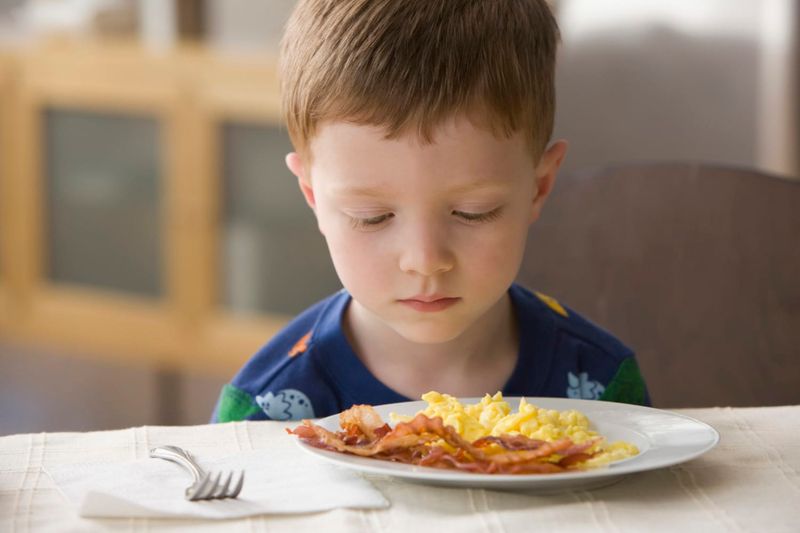
Back then, children were often expected to blend into the background, like wallpaper or a quiet old cat. The belief was that kids should observe and learn without interruption, not participating in adult conversations.
This notion of children being “seen and not heard” limited their ability to express themselves, ask questions, or share thoughts. But as the world turned, so did the understanding of childhood development.
Today, we value children’s voices, encouraging them to speak up, share feelings, and engage in meaningful dialogues. This shift recognizes that fostering communication skills and self-expression is crucial for personal growth and confidence, breaking the silence of outdated beliefs.
9. Therapy is only for “crazy” people

Back in the day, therapy was often viewed with skepticism, a last resort for those deemed “crazy.” Seeking professional help for mental health was shrouded in stigma, cloaked in whispers, and often avoided at all costs.
Mental wellness conversations were swept under the rug or met with awkward shuffles. But as awareness grew, so did the acceptance of therapy as a tool for everyone, not just those in crisis. Today, therapy is celebrated as a pathway to self-discovery, healing, and personal growth.
The stigma has been dismantled, allowing people to explore their mental health openly and without shame. Therapy is now recognized as a powerful resource for navigating life’s challenges.
10. Boys don’t cry, and girls don’t lead

The 80s were riddled with gender stereotypes that painted boys and girls in restrictive colors. Boys were handed the “tough it out” card, while girls were gifted the “play nice” mantra. Crying was seen as a sign of weakness in boys, while leadership in girls was often dismissed.
These beliefs boxed children into narrow roles and stifled potential. Thankfully, we’ve moved past such limiting views. Boys are now encouraged to express emotions freely, and girls are nurtured to shine as leaders.
Society has embraced diversity in gender expressions, recognizing that emotional intelligence and leadership skills are not confined by gender. The old rules have been tossed aside, making way for a more inclusive and supportive environment for all.
11. Spanking is the only way kids learn respect

Once considered a staple of discipline, spanking was seen as the go-to method for teaching respect. Parents believed it was the most effective way to correct behavior and instill values. The narrative spun around the idea that “spare the rod, spoil the child,” but times have changed.
Today, research and experience have shown that physical punishment can harm more than it helps, leading to emotional and psychological issues. Positive reinforcement, communication, and understanding have taken center stage, replacing outdated disciplinary methods.
The emphasis is now on building trust, empathy, and respect through guidance rather than fear. Parenting has evolved, and the toolbox is richer and more compassionate.
12. A “real man” doesn’t do housework

The 80s came with a manual that dictated a “real man” steered clear of vacuum cleaners and dishwashers. Housework was labeled as women’s territory, and men were often applauded for avoiding it. This belief cemented gender roles, leaving little room for shared responsibilities.
However, as society progressed, these rigid norms began to crumble. Today, housework is seen as a shared duty, with men actively participating in creating a balanced and equitable home environment.
The modern man embraces domestic tasks, recognizing that contributing to household duties is not just practical but essential for nurturing strong, respectful partnerships.
13. Women over 30 are “past their prime”

In the 80s, turning 30 felt like reaching the end of a chapter for women. Society imposed an imaginary expiration date, labeling women “past their prime” once they hit the big three-oh. Career opportunities, societal roles, and even personal worth were seen as dwindling.
But today, the narrative has shifted dramatically. Women over 30 are celebrated for their wisdom, experience, and vitality. They break boundaries and redefine success, proving that age is just a number.
The stigmas have faded, replaced by a celebration of life’s ongoing journey, where each decade brings new opportunities, adventures, and achievements. The prime is wherever you decide it to be.
14. Divorce ruins kids—no exceptions
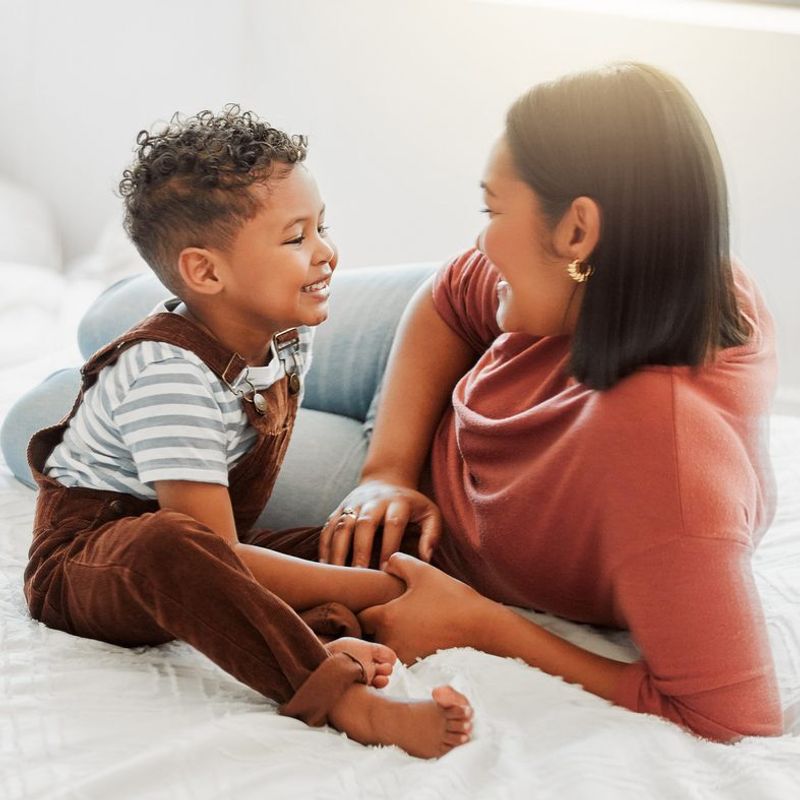
The belief that divorce unequivocally damages children was a heavy cloak draped over separating couples. Parents feared that choosing divorce meant dooming their kids to a life of emotional turmoil. But as divorce rates climbed, so did the understanding of its varied impacts.
While divorce presents challenges, many children adapt, thrive, and develop resilience. The focus has shifted to supporting children through transitions, emphasizing open communication and emotional support.
Divorce doesn’t have to spell disaster; it can be a catalyst for growth and a healthier family dynamic. Families today prioritize well-being over maintaining appearances, recognizing that love and stability come in many forms.
15. A man cheating is just “what men do”

Infidelity, particularly by men, was often brushed off with a shrug and a sigh in the 80s. The notion that “boys will be boys” served as a convenient excuse for behavior that strained relationships and trust. This belief perpetuated double standards and undermined the sanctity of commitment.
Thankfully, attitudes have evolved. Today, fidelity is seen as a cornerstone of a healthy relationship, and accountability is key. Trust and respect are non-negotiable, and infidelity is no longer excused as a natural inclination but addressed as a breach of trust.
Society has moved towards fostering environments where open communication and mutual respect are prioritized, leaving antiquated beliefs behind.
16. Your partner should be everything to you

The 80s romance script often demanded that partners become each other’s everything. The idea was that your significant other should fulfill every need, desire, and expectation, creating an unrealistic pressure cooker of dependency.
But as the years rolled on, the realization that no one person can be everything dawned. Relationships today encourage individuality, personal growth, and external connections. While partners share life, love, and laughter, they also pursue separate interests and friendships, creating a more balanced dynamic.
The truth is, a healthy relationship thrives on interdependence, where both partners are whole and enriched by each other’s presence, not defined by it.
17. LGBTQ+ relationships are just a “phase”

The 80s were not exactly the banner decade for LGBTQ+ acceptance. Relationships within this community were often dismissed as “phases” or “experiments,” with societal pressure pushing individuals back into the closet.
Meanwhile, love and identity were fighting to break free from the confines of outdated beliefs. Fast forward to today, and the spectrum of love is celebrated in all its colors. LGBTQ+ relationships are acknowledged, respected, and supported, as society makes strides towards equality and acceptance.
Love is love, and the phase mentality has been replaced by an understanding that identity is complex, diverse, and deserving of recognition and respect.
18. Step-parents are never as good as “real” parents
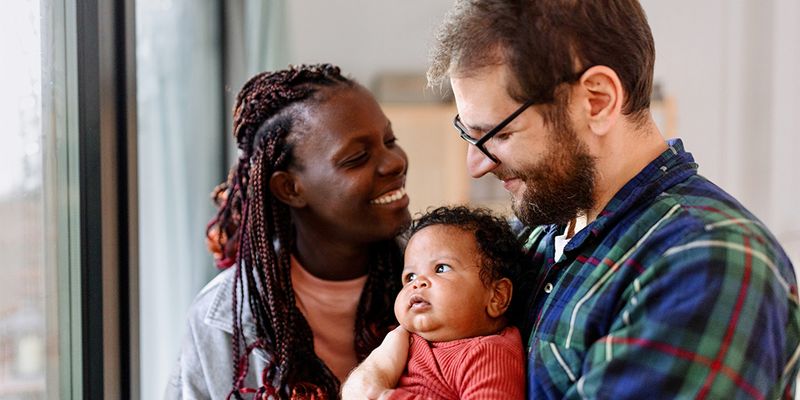
Step-parents in the 80s were often cast as the shadowy figures lurking at the edges of the family photo. The belief that they could never fill the shoes of “real” parents was a narrative flaw that ignored their potential for love and connection.
Today, families are celebrated in all their forms, and step-parents are recognized for their contributions. They are seen as additional sources of support, love, and guidance, enhancing the family tapestry.
Blended families are no longer the exception but a vibrant part of societal norms, where relationships grow from kindness, respect, and shared experiences, defying the limiting beliefs of the past.
19. Getting married young is always the goal

Marriage at a young age was often presented as the ultimate life milestone in the 80s. The sooner you tied the knot, the better! However, hasty decisions led to unforeseen challenges, as many young couples discovered that wedding bells didn’t always lead to harmony.
Today, the emphasis has shifted towards personal readiness and commitment. Society encourages individuals to explore, grow, and understand themselves before making lifelong commitments.
The goal is no longer about racing to the altar but about building a foundation of trust, understanding, and shared values. The timeline of love is personal, and there’s no rush to meet outdated expectations.
20. Wanting personal space means you’re selfish
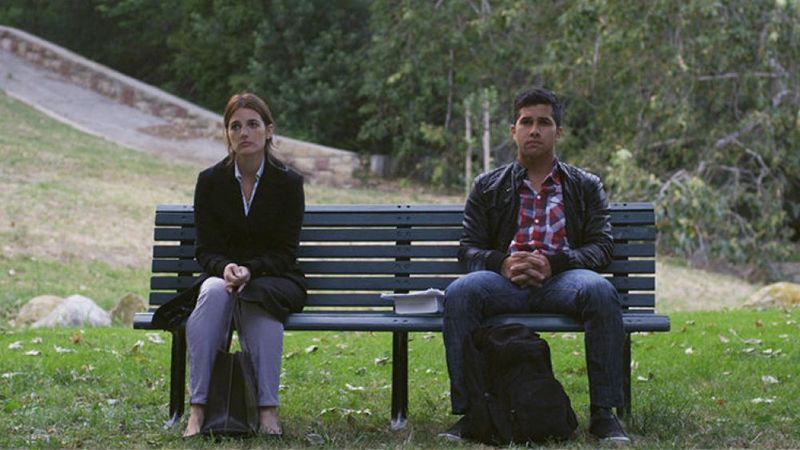
The idea that needing personal space was synonymous with selfishness was a popular tune in the 80s. Relationships were often viewed as all-consuming, leaving little room for individuality or solitude. But as people felt the strain, a shift occurred.
Today, personal space is recognized as an essential component of healthy relationships. It allows individuals to recharge, reflect, and maintain their sense of self.
The narrative has evolved to embrace the idea that space is not a sign of detachment but a nurturing aspect of love and respect. Having time to oneself is now seen as a strength, not a weakness, enriching relationships with balance and understanding.
21. Women shouldn’t talk about physical intimacy—especially moms

In the 80s, there was an unspoken rule that women, particularly mothers, should maintain a Victorian-like silence on the topic of physical intimacy. Discussing desires or experiences was considered taboo, something to be swept under the proverbial rug.
Moms were expected to exude an image of purity and propriety, leaving little room for open, honest conversations. But as understanding grew, so did the realization that these conversations are vital.
Today, women are encouraged to embrace their intimacy, discuss it openly, and demolish outdated taboos. Physical intimacy is now celebrated as a part of human experience, and conversations are filled with empowerment, laughter, and connection.
22. If the dad babysits, he deserves a medal
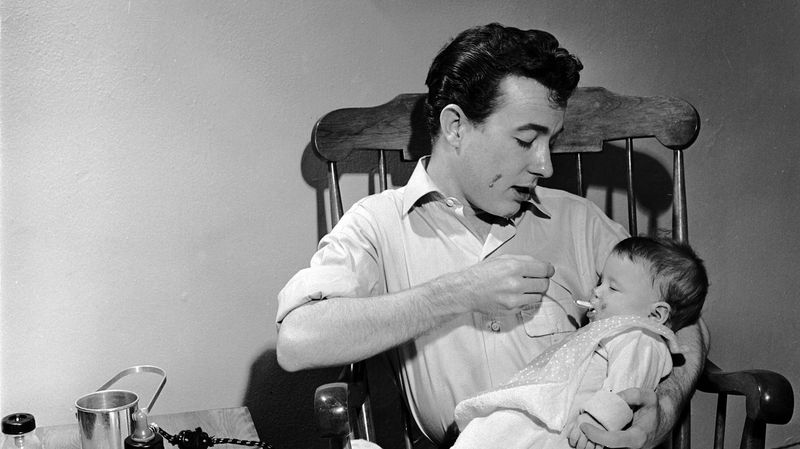
The 80s had a peculiar way of praising dads for “babysitting” their own kids, as if parenting was a task outside their usual domain. Fathers who spent time with their children were often lauded as exceptional, despite merely participating in their natural roles.
Today, the narrative has changed. Fatherhood is celebrated as a shared journey, where dads are equal partners in the parenting sphere.
The idea that dads deserve extra praise for simply being present has faded, replaced by an appreciation for active fatherhood as the norm. Parenting is a team effort, and both parents are recognized for their commitment, love, and involvement.
23. Talking about feelings makes you weak

The stiff upper lip was the 80s mantra when it came to feelings. Emotions were best kept under wraps, lest they expose a chink in the armor of strength. Talking about feelings was often equated with weakness, a vulnerability to be avoided.
But as understanding grew, so did the acceptance of emotions as a natural part of life. Today, expressing feelings is seen as a sign of strength and self-awareness. Open dialogues about emotions foster empathy, connection, and personal growth.
The once-guarded world of feelings has transformed into a landscape rich with conversation, understanding, and acceptance. Emotions are no longer feared but embraced.
24. You should stay married “for the kids”

The belief that staying married was best for the children was a pervasive force in the 80s. Couples often remained together, enduring unhappiness to preserve a facade of family unity. But time has revealed that children thrive in environments filled with love, not tension.
Today, prioritizing the well-being of all family members, including parents, takes precedence. Divorce is no longer vilified but understood as a potential path to healthier, happier lives for everyone involved.
The emphasis is now on nurturing supportive, loving relationships, whether within a marriage or beyond, ensuring that children witness and experience genuine happiness and respect.
25. Women who don’t want kids are broken

The 80s imposed a mold that every woman should want to become a mother, and those who didn’t were often labeled as ‘broken’ or ‘incomplete.’ Choosing not to have children was met with raised eyebrows and unsolicited questions. But times have changed, and so has the narrative.
Women are now empowered to make choices that align with their personal desires and life goals. Motherhood is a personal choice, not a universal decree. The idea of being ‘broken’ has been replaced with an understanding that fulfillment comes in many forms.
Society now celebrates diverse paths, acknowledging that a woman’s worth isn’t tied to her reproductive choices.
26. Men shouldn’t show affection to their sons
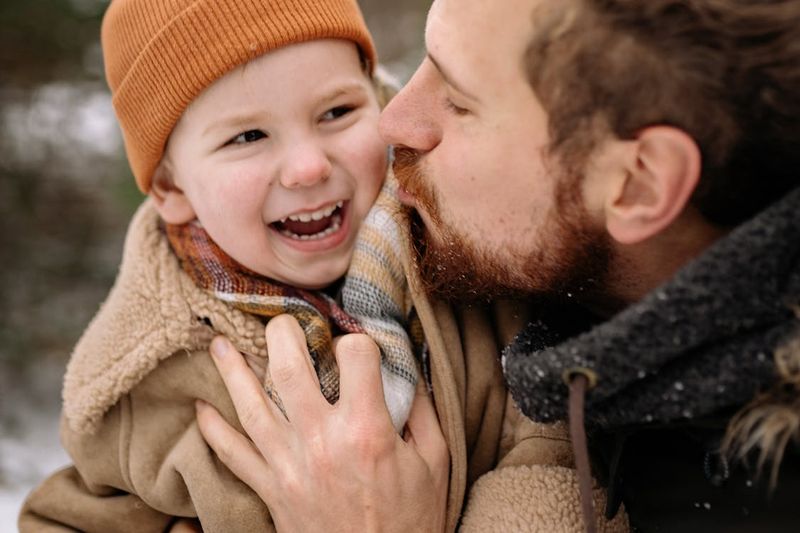
The stereotype that men should withhold affection from their sons was a frustrating norm in the 80s. Displays of love between fathers and sons were often discouraged, seen as contradicting masculine ideals.
But as the years passed, the importance of emotional expression within families became clear. Dads today are encouraged to show affection openly, understanding that nurturing connections foster strong, healthy relationships.
Expressing love is recognized as a fundamental building block for emotional security and resilience. The outdated belief that strength equals emotional distance has been replaced by a celebration of bonds formed through kindness, understanding, and love.
27. The mom is responsible for keeping the marriage together

In the 80s, the responsibility of maintaining a marriage often fell squarely on the mother’s shoulders. The pressure to keep everything together, from managing household duties to emotional labor, was immense.
Moms were seen as the glue, expected to hold everything in place, often at the expense of their well-being. But today, relationships are seen as partnerships, where both parties contribute to nurturing and sustaining their connection.
The narrative has shifted from expectation to collaboration, recognizing that a successful marriage requires effort and commitment from both partners. The burden has been lifted, replaced by a balanced dynamic that celebrates teamwork and mutual support.
28. Housewives Shouldn’t Handle Finances

Back in the 80s, the idea that housewives should steer clear of family finances seemed pervasive. Money matters were often left to the “man of the house,” reflecting outdated gender roles. This belief ignored the financial acumen many women naturally possess. As society shifted, so did the recognition of women’s capability in financial spheres. Today, many households see women spearheading budget planning, investing, and more.
Financial independence empowers creativity and stability. Allowing all family members to participate in financial decisions fosters a balanced, thriving household. Did you know? The involvement of women in finance often leads to more comprehensive financial planning.
29. Living Together Before Marriage Ruins the Relationship

The belief that living together before marriage dooms a relationship was widespread in the 80s. Many thought that cohabitation led to a lack of commitment, but statistics tell a different story today. Living together can strengthen bonds, offering a glimpse into partnership dynamics.
Testing compatibility and sharing daily life experiences often build a solid foundation for marriage. In fact, modern studies show reduced divorce rates among couples who cohabitate beforehand.
Did you know? The trend of “trial marriages” or cohabitation surged in the late 20th century, challenging the conventional wisdom of earlier decades.

